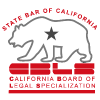Many people are afraid that filing a Chapter 7 bankruptcy means that they are going to lose at least some of their property. In most cases, that is not true. In California, we have three different sets of applicable exemptions that can be used in your bankruptcy to protect your property.
1. The California Homestead Set
This set of exemptions has one that is solely to be used for protecting home equity, prior to 2021, the homestead exemptions had been tiered at $75,000 for single persons, $100,000 for a household, and $175,000 for those who were 65+ or disabled. As of January 1, 2021, the homestead exemptions changed to be much more generous. The California homestead exemption now varies from county to county, but has a $300,000 floor and a $600,000 ceiling. As of now, it is looking that our local homestead exemptions are approximately:
- Orange County: $600,000
- Riverside County: $440,000
- San Bernardino County: $300,000
- Los Angeles County: $600,000
- San Diego County: $600,000
However, there are a few caveats to that exemption that could get you into trouble without proper planning. For instance, pursuant to the Bankruptcy Code, you can have your homestead exemption capped at approximately $170,000 even if your state allows a higher exemption if it can be proven that you obtained the property by using non-exempt property within the past 10 years.
The Homestead exemptions also come with a whole series of other exemptions to cover common property like household goods, cars, tools of the trade, retirement accounts, and some portion of your wages. Most of these exemptions are capped at a relatively low value. If the exemption is not enough to cover the full value of a piece of property, then it is at risk of being taken by the trustee.
2. The California Wildcard Exemptions
This is the set of exemptions used by most people who either do not own a home or do not have equity in their home. Just like the homestead set, there are a variety of specific exemptions that can be used for things like household goods, cars, wages, retirement accounts, etc. The big bonus from this set is the approximately $30,000 “wildcard exemption” which can be used to cover miscellaneous pieces of property that either do not have a specific exemption, or can be used on top of another exemption to increase the amount protected of a certain piece of property.
3. The Federal Non-Bankruptcy Exemptions
The Bankruptcy Code has it’s own set of exemptions that are laid out in Section 522. However, California is a “opt out state” which means that these exemptions cannot be used. Which is a good thing since the 522 exemptions are extremely meager compared to what is available in California. However, there are Federal laws outside of the Bankruptcy Code which protect certain pieces of property from execution by creditors. These are called the Federal Non-Bankruptcy Exemptions. For instance, under the Education Code section 1095a, the funds from a Federally-backed student loan are exempt.
4. Exemption & Pre-Bankruptcy Planning
With proper planning, you will most likely be able to keep your property. In a case where you your financial situation is such that you would lose property in a Chapter 7, we can often do some “exemption planning” so that you are able to maximize the amount of property that you keep. This can be risky since moving around property prior to filing bankruptcy can get come with serious repercussions if done improperly, but it is permissible so long as exemption planning is done above-the-board and does not run afoul of any of the provisions of the Bankruptcy Code.
All that said, the trustee who is assigned to your case is going to be looking hard to find any non-exempt property that they can go after. In a case where the trustee does not liquidate any property, all they get is $60 – which the same rate that they’ve been receiving since 1994. In a case where the trustee does liquidate property, they receive a steep commission starting at 25%. On top of that, they can also charge for other services rendered “on behalf of the estate”. So the trustee has a very strong incentive to find property, challenge exemptions, or use any of their many trustee powers if they believe it will result in some kind of payment to creditors. So while most cases are “no asset cases”, the risk of losing property is the defining aspect of Chapter 7 and it is a risk that should be considered no matter what you situation is.
Related posts:
- California Homestead Exemption: $300k, $600k… or less?
California Homestead Exemption: Minimum of $300k and Maximum of $600k The California homestead exemptions allow... - Can Spouses Living Separately Claim an Increased “Family Unit” Homestead Exemption?
When filing bankruptcy in California, you have a choice of claiming either the “Homestead Exemptions”... - Can The Trustee Take Your Student Loans?
Overview of Property of the Estate and Exemptions All Chapter 7 cases come with a...









